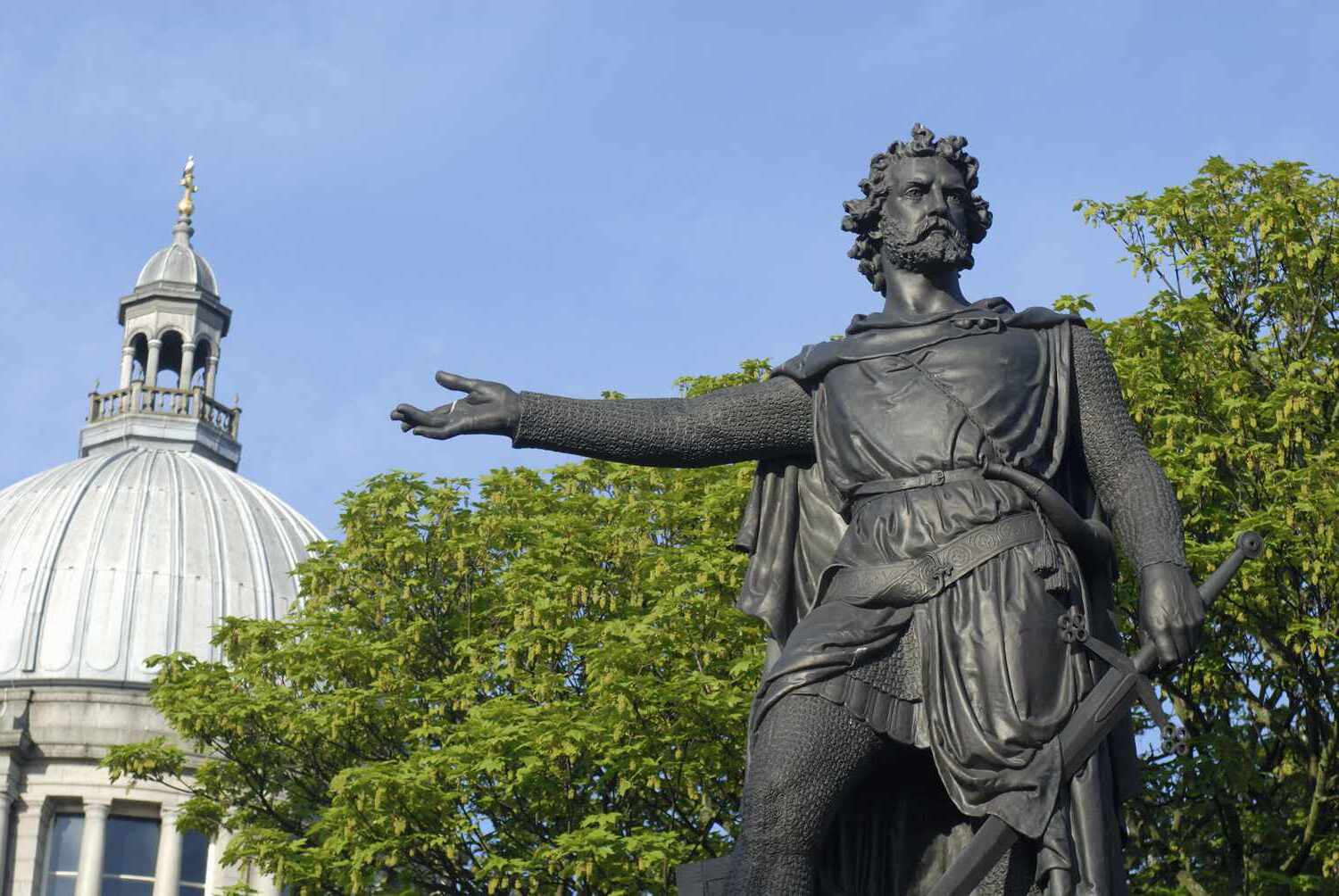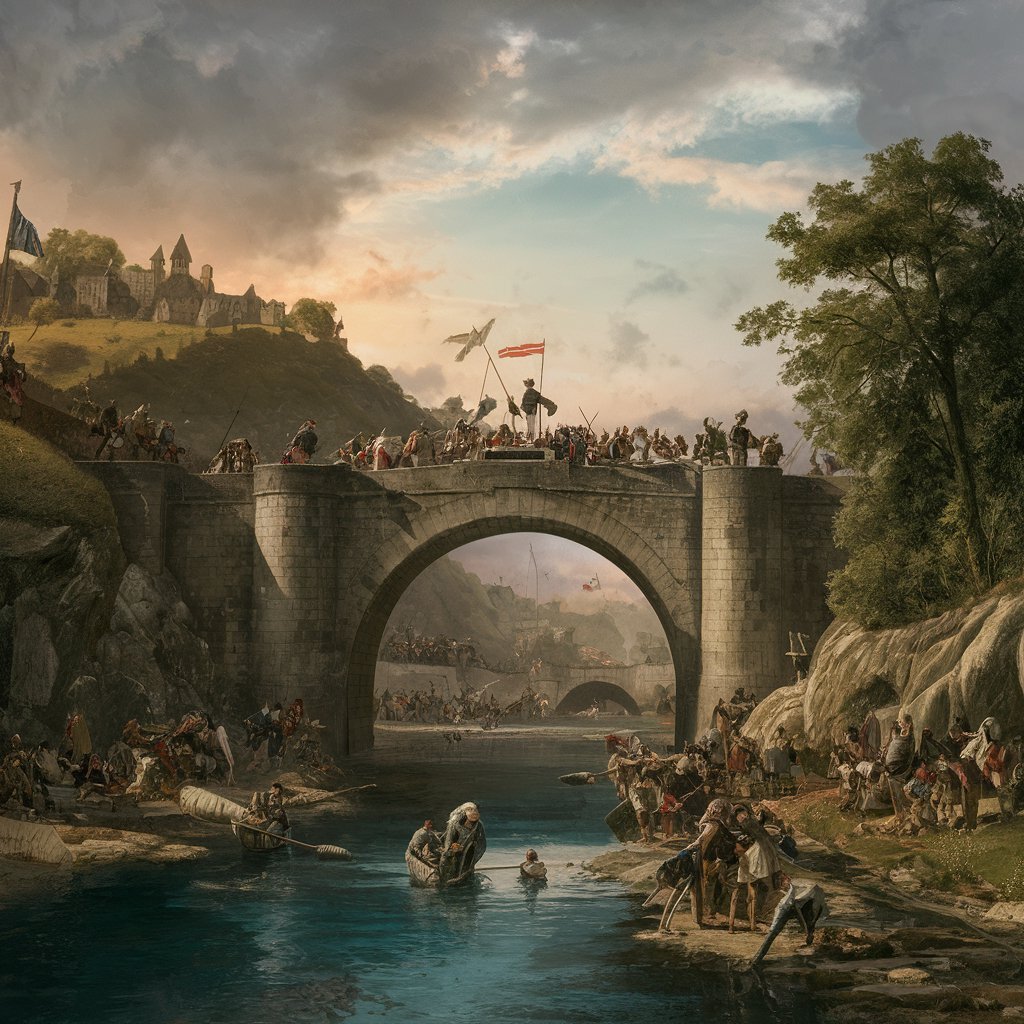
William Wallace, a name synonymous with Scottish independence and fierce bravery, has captivated hearts and minds for centuries. But beyond the Hollywood portrayal lies a complex figure, woven into the fabric of Scotland's history. William Wallace was not just a warrior; he was a symbol of resistance against oppression. This introduction will guide you through 30 fascinating facts about Wallace, shedding light on his life, his battles, and his enduring legacy. From his humble beginnings to his dramatic end, and the myths that have flourished around his legend, we'll uncover the true story of this iconic hero. Perfect for history buffs and curious minds alike, these insights promise to enrich your understanding of a man who fought valiantly for his country's freedom.
Early Life and Background
William Wallace, a name synonymous with Scottish independence, has a history filled with intrigue and bravery. Let's explore some fascinating facts about this legendary figure.
- Born around 1270, Wallace hailed from Elderslie in Renfrewshire, Scotland.
- His father, Sir Malcolm Wallace, was a minor landowner and knight.
- Wallace's family was part of the lesser nobility, giving him a modest upbringing.
- He was educated by his uncle, a priest, which was uncommon for someone of his status.
- Wallace grew up during a time of political turmoil in Scotland, which shaped his future.
Rise to Prominence
Wallace's journey from a commoner to a national hero is nothing short of extraordinary. Here are some key moments that marked his rise.
- In 1297, Wallace led a rebellion against English rule, marking the start of his fight for Scottish independence.
- He gained notoriety after killing the English sheriff of Lanark, William Heselrig.
- Wallace's victory at the Battle of Stirling Bridge in 1297 was a turning point in the Scottish Wars of Independence.
- He used guerrilla tactics, which were innovative for that era, to outsmart the English forces.
- After Stirling Bridge, Wallace was knighted and appointed Guardian of Scotland.
Leadership and Tactics
Wallace's leadership and military strategies were pivotal in his fight against English domination. Let's delve into some of his notable tactics.
- He formed alliances with other Scottish nobles to strengthen his forces.
- Wallace's use of the schiltron formation, a defensive tactic using spears, was highly effective.
- He understood the importance of morale and often inspired his troops with passionate speeches.
- Wallace's knowledge of the Scottish terrain gave him a strategic advantage.
- Despite limited resources, he managed to sustain a prolonged resistance against a much larger English army.
Capture and Execution
Wallace's capture and subsequent execution were tragic yet significant events in Scottish history. Here are some details about his final days.
- In 1305, Wallace was betrayed by a fellow Scot, Sir John Menteith, and handed over to the English.
- He was taken to London, where he was tried for treason and other charges.
- Wallace famously declared he could not be a traitor to Edward I, as he had never sworn allegiance to him.
- On August 23, 1305, Wallace was executed in a brutal manner, being hanged, drawn, and quartered.
- His execution was intended to serve as a warning to other would-be rebels.
Legacy and Cultural Impact
Wallace's legacy endures, influencing Scottish culture and identity. Here are some ways his memory has been preserved.
- The Wallace Monument, erected in 1869 near Stirling, commemorates his life and achievements.
- His story has been immortalized in literature, including the 15th-century epic poem "The Wallace" by Blind Harry.
- The 1995 film "Braveheart," starring Mel Gibson, brought Wallace's story to a global audience.
- Wallace is celebrated annually on August 23, known as Wallace Day, in Scotland.
- His life and deeds continue to inspire movements for freedom and independence worldwide.
Myths and Misconceptions
Over the centuries, many myths and misconceptions have surrounded Wallace's life. Let's clarify some of these.
- Contrary to popular belief, Wallace was not a highlander but a lowlander.
- The notion that he wore a kilt is historically inaccurate, as kilts were not common attire during his time.
- Wallace's relationship with Princess Isabella of France, as depicted in "Braveheart," is fictional; she was only a child during his lifetime.
- Some historians argue that Wallace's role in the Wars of Independence has been exaggerated, overshadowing other key figures.
- Despite these myths, Wallace remains a symbol of resistance and national pride for many Scots.
A Final Glimpse at Scotland's Hero
William Wallace's legacy is as towering as the Scottish Highlands themselves. From his humble beginnings to becoming a symbol of freedom and resistance, Wallace's story is a testament to the enduring spirit of Scotland. His life, filled with battles, bravery, and a quest for independence, continues to inspire and captivate people around the world. Whether it's through the pages of history books, the silver screen, or the proud tales of the Scottish people, Wallace's legacy lives on. His fight for freedom laid the groundwork for Scotland's future and reminds us all of the power of courage and conviction. As we look back at the remarkable life of William Wallace, let's carry forward the spirit of freedom and resilience he embodied. Wallace might have left the mortal world centuries ago, but his legend, as mighty as the Wallace Monument, stands tall and unyielding.
Was this page helpful?
Our commitment to delivering trustworthy and engaging content is at the heart of what we do. Each fact on our site is contributed by real users like you, bringing a wealth of diverse insights and information. To ensure the highest standards of accuracy and reliability, our dedicated editors meticulously review each submission. This process guarantees that the facts we share are not only fascinating but also credible. Trust in our commitment to quality and authenticity as you explore and learn with us.


